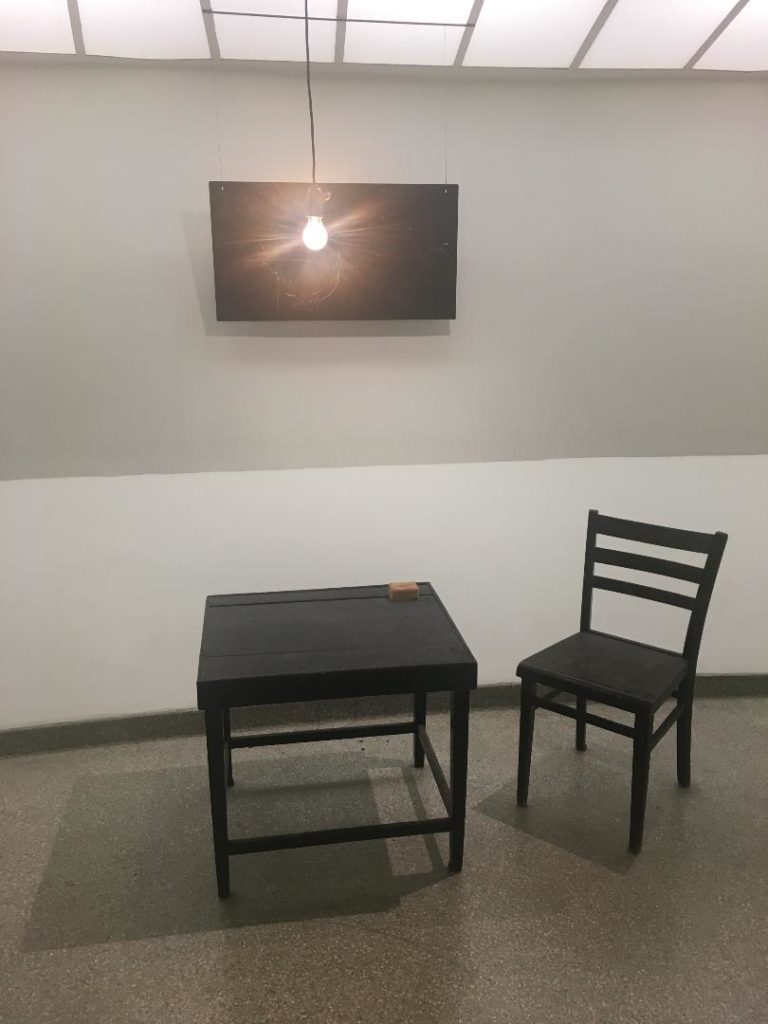Artistic License: Six Takes on the Guggenheim Collection, is the first artist-curated exhibition mounted at the Guggenheim, celebrating the museum’s extensive holdings of twentieth-century modern and contemporary art. Curated by six contemporary artists who each have helped to shape the Guggenheim’s history with their own pivotal solo shows—Cai Guo-Qiang, Paul Chan, Jenny Holzer, Julie Mehretu, Richard Prince, and Carrie Mae Weems—the presentation which occupies the entire rotundo brings together collection highlights and rarely seen works from the turn of the century to 1980.
Personally, I was elated to learn one of my favorite artists Carrie Mae Weems was chosen to be one of the curators. As I rounded the rotundo on the fifth floor, I was greeted by an installation pictured below. At first, I thought it was the black kitchen table and chairs Weems used in her “Kitchen Table Series” of staged photographs depicting Weems herself sitting at a kitchen table, in a powerful meditation on domesticity and relationships. The wall card indicated the installation titled “Virgin (Jungfrau), April 4, 1979” was a representation of the performative artist Joseph Beuys’ “participation in cultural debates about the conversion of a Viennese palace into a modern art museum.” To be candid, my initial connection with kitchen furniture and Weems had me curious about her curatorial choice to include this work in her presentation. Viennese palaces and modern art?

Image Credit: Guggenheim Museum
https://www.guggenheim.org/artwork/artist/joseph-beuys
My confusion ended when I read her curatorial statement posted on the wall to the right of the installation. Weems presentation, “What Could Have Been,” exposes inherent biases of museum collections focused on the Western art-historical canon. She says, “Western museums tell partial stories about art history” between 1900-1980, (the cut-off year that frames this exhibition.) Where are the artworks by black and brown artists and by women in general?” Weems chose visual representations of a “strictly black-and-white palette across different decades, medium, and genres as a framing device and organizing principle for the project.”
Works include a black and grey color field painting by Mark Rothko, Untitled (Black on Gray) (1969/70), the diagonal black slashes against a white background in the painting by Franz Kline, Painting No. 7 (1952) examples by a woman of color, Ana Mendieta from her Silueta series in the early 70s. The “Virgin” installation by Bueys is reinterpreted by Weems, and in the context of the presentation, functions as the cornerstone, “with its simple table and chair, chalkboard and suspended lightbulb,” from which ideas radiate outward in a circular motion. Emulating a classroom, the installation suggests a space for contemplation, a location dedicated to learning and analysis.” Wow!! That really resonated with me as one who daily crafts a life seeped in the visual arts, the essentialness of creating a contemplative space to learn, to analyze, to really see the broader collective voices of artists excluded in artistic canon.
My next blog will highlight the presentation by another favorite woman artist of mine, Jenny Holzer. Artistic License is a dazzling show, exhibited until January 12, 2020. Learn more at https://www.guggenheim.org
